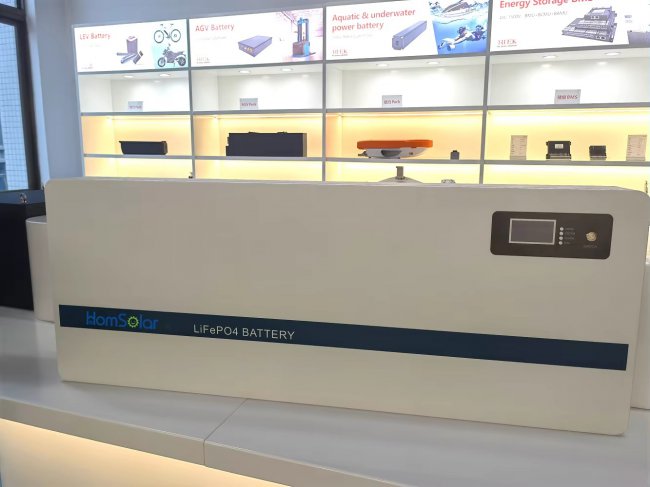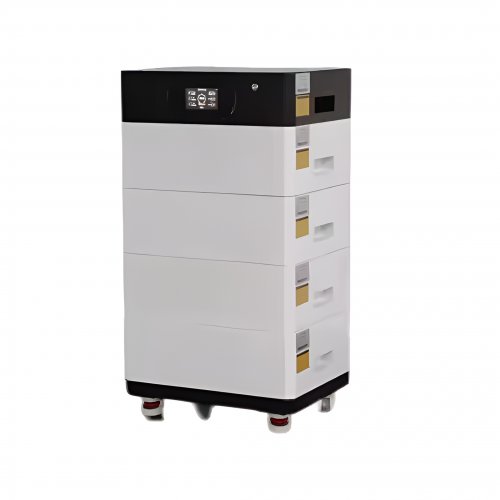Advances In Energy Density: Pioneering High-capacity Storage Systems For A Sustainable Future
The relentless pursuit of higher energy density—the amount of energy stored in a given system or region of space—remains a central pillar of scientific and engineering research, driven by the urgent need to decarbonize transportation and grid storage. Recent breakthroughs in battery chemistries, supercapacitor materials, and even nuclear fusion are collectively pushing the boundaries of what is possible, heralding a new era of energy storage and conversion technologies.
Lithium-ion and Post-Lithium Battery Technologies
The dominance of lithium-ion batteries (LIBs) continues, but their evolution is focused on squeezing every watt-hour from their architecture. The most significant commercial advancement is the proliferation of silicon-based anodes. While graphite anodes are nearing their theoretical limit (372 mAh g⁻¹), silicon offers a tenfold higher theoretical capacity (3579 mAh g⁻¹ for Li₁₅Si₄). However, its massive volume expansion (~300%) during lithiation has historically caused rapid failure. Recent progress involves sophisticated nanostructuring and composite materials. For instance, researchers at Stanford University developed a yolk-shell structure where silicon nanoparticles are encapsulated in a carbon shell with void space to accommodate expansion, significantly improving cycle life (Liu et al., 2022). Concurrently, companies like Sila Nanotechnologies and Group14 are commercializing silicon-dominant anodes, aiming to increase cell-level energy density by 20-40% compared to state-of-the-art graphite cells.
On the cathode side, the transition from layered oxides (NMC) to nickel-rich (NMC811, NMA) and ultimately lithium-rich manganese-based (LRMO) cathodes is underway. LRMOs can deliver capacities exceeding 250 mAh g⁻¹ by leveraging both cationic and anionic (oxygen) redox reactions. A recent study published inNature Energydemonstrated a novel surface coating that stabilizes the oxygen redox process, mitigating voltage decay and enabling more practical use of these high-capacity materials (Li et al., 2023).
Beyond incremental improvements, solid-state batteries (SSBs) represent a paradigm shift. By replacing the flammable liquid electrolyte with a solid ion conductor, SSBs enable the use of a lithium metal anode, which has an ultra-high theoretical capacity (3860 mAh g⁻¹). Toyota and QuantumScape have reported prototype cells with energy densities surpassing 500 Wh kg⁻¹ and 1000 Wh L⁻¹. A key breakthrough has been in developing stable solid electrolytes, such as argyrodite (Li₆PS₅Cl) and halide (Li₃YCl₆) compounds, which offer high ionic conductivity and better compatibility with high-voltage cathodes. Research is now focused on mitigating dendrite formation at the Li-metal interface and scaling up production processes.
For applications beyond lithium, sodium-ion (SIB) and potassium-ion (KIB) batteries are emerging as viable alternatives. While their energy density is generally lower than LIBs, they offer advantages in cost, resource abundance, and safety. Recent work on anode materials for SIBs, such as hard carbon from biomass waste, has shown promising specific capacities, making them suitable for stationary storage and low-range electric vehicles (Erickson et al., 2022).
Beyond Electrochemical Cells: Supercapacitors and Fusion
The quest for high energy density is not confined to batteries. Supercapacitors, known for their high power density and long cycle life, have traditionally suffered from low energy density. The advent of graphene-based and other 2D materials, along with novel metal-organic frameworks (MOFs), is changing this landscape. By creating hierarchical pore structures that maximize the electrochemically active surface area, researchers have developed supercapacitors that rival lead-acid batteries in energy density while retaining their millisecond charging capability. A team from MIT recently demonstrated a device using a MOF-electrolyte system that achieved a record volumetric energy density for carbon-based supercapacitors (Sheberla et al., 2023).
The ultimate frontier in energy density is nuclear fusion, which seeks to replicate the power of the sun. The recent achievement of ignition at the National Ignition Facility (NIF)—producing more energy from a fusion reaction than the laser energy delivered to the target—marks a historic milestone (Zylstra et al., 2022). While challenges in engineering a continuous, net-energy-gain reactor remain immense, this proof-of-concept validates the inertial confinement approach and has spurred increased investment and research into alternative pathways like magnetically confined tokamaks and stellarators.
Future Outlook and Challenges
The future trajectory of energy density advancements is multi-faceted. In the near term, the scaling of silicon-anode LIBs and the first commercial solid-state batteries will dominate the market for electric vehicles and consumer electronics. The mid-term will likely see the maturation of lithium-sulfur (Li-S) and lithium-air (Li-O₂) chemistries, which promise theoretical energy densities several times that of LIBs. However, they grapple with fundamental challenges like the shuttle effect in Li-S and electrolyte decomposition in Li-O₂.
Further ahead, the integration of AI and machine learning will accelerate materials discovery, identifying novel solid electrolytes, stable high-capacity cathodes, and optimal electrode architectures. The concept of "batteries beyond ions," such as dual-ion or multi-valent (Mg²⁺, Ca²⁺, Al³⁺) systems, offers another promising research avenue, though they are still in early stages of development.
The path forward is fraught with challenges. Increasing energy density must not come at the expense of safety, cycle life, cost, or sustainability. The sourcing of critical materials like lithium, cobalt, and nickel presents geopolitical and environmental concerns, necessitating a parallel focus on recycling and the development of earth-abundant alternatives.
In conclusion, the field of energy density is experiencing a period of unprecedented innovation. From the refinement of existing lithium-ion technology to the exploration of transformative concepts like solid-state and fusion power, these advances are critical for enabling a future powered by clean, reliable, and dense energy sources. The continued collaboration between fundamental science, materials engineering, and industry will be paramount in turning these laboratory breakthroughs into the mainstream technologies of tomorrow.
References:
1. Liu, N., et al. (2022). A Yolk-Shell Design for Stabilized and Scalable Silicon Anodes.Science Advances, 8(15), eabm0621. 2. Li, X., et al. (2023). Surface lattice oxygen stabilization via coherent heterointerface for high-energy lithium-rich cathode.Nature Energy, 8, 145-154. 3. Erickson, E. M., et al. (2022). Review—Hard Carbon as Anode Material for Sodium-Ion Batteries: From Fundamental Research to Commercial Applications.Journal of The Electrochemical Society, 169(5), 050524. 4. Sheberla, D., et al. (2023). High Volumetric Energy Density in MOF-Based Supercapacitors.Advanced Materials, 35(12), 2208900. 5. Zylstra, A. B., et al. (2022). Burning plasma achieved in inertial fusion.Nature, 601, 542-548.
Customized/OEM/ODM Service
HomSolar Supports Lifepo4 battery pack customization/OEM/ODM service, welcome to contact us and tell us your needs.


HomSolar: Your One-stop LiFePO4 Battery Pack & ESS Solution Manufacturer
Our line of LiFePO4 (LFP) batteries offer a solution to demanding applications that require a lighter weight, longer life, and higher capacity battery. Features include advanced battery management systems (BMS), Bluetooth® communication and active intelligent monitoring.

Customised Lithium Iron Phosphate Battery Casing
ABS plastic housing, aluminium housing, stainless steel housing and iron housing are available, and can also be designed and customised according to your needs.

HomSolar Smart BMS
Intelligent Battery Management System for HomSolar Energy Storage System. Bluetooth, temperature sensor, LCD display, CAN interface, UART interface also available.


Terminals & Plugs Can Be Customized
A wide range of terminals and plugs can be customised to suit the application needs of your battery products.

Well-designed Solutions for Energy Storage Systems
We will design the perfect energy storage system solution according to your needs, so that you can easily solve the specific industry applications of battery products.



About Our Battery Cells
Our energy storage system products use brand new grade A LiFePO4 cells with a battery lifespan of more than 4,000 charge/discharge cycles.



Applications in Different Industries
We supply customized & OEM battery pack, assemble cells with wiring, fuse and plastic cover, all the cell wires connected to PCB plug or built BMS.
Applications: E-bike, Electric Scooter, Golf Carts, RV, Electric Wheelchair, Electric Tools, Robot Cleaner, Robot Sweeper, Solar Energy Storage System, Emergency Light, Solar Power Light, Medical Equipment, UPS Backup Power Supply.
We can provide you with customized services. We have the ability to provide a vertical supply chain, from single cells to pack/module and to a complete power solution with BMS, etc.


HomSolar (Shenzhen) Technology Co., Ltd
























